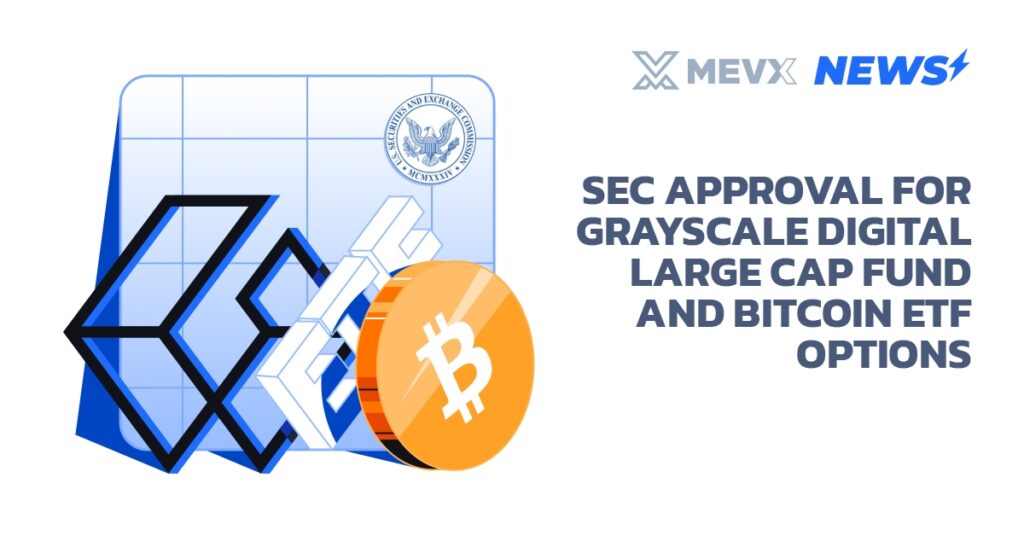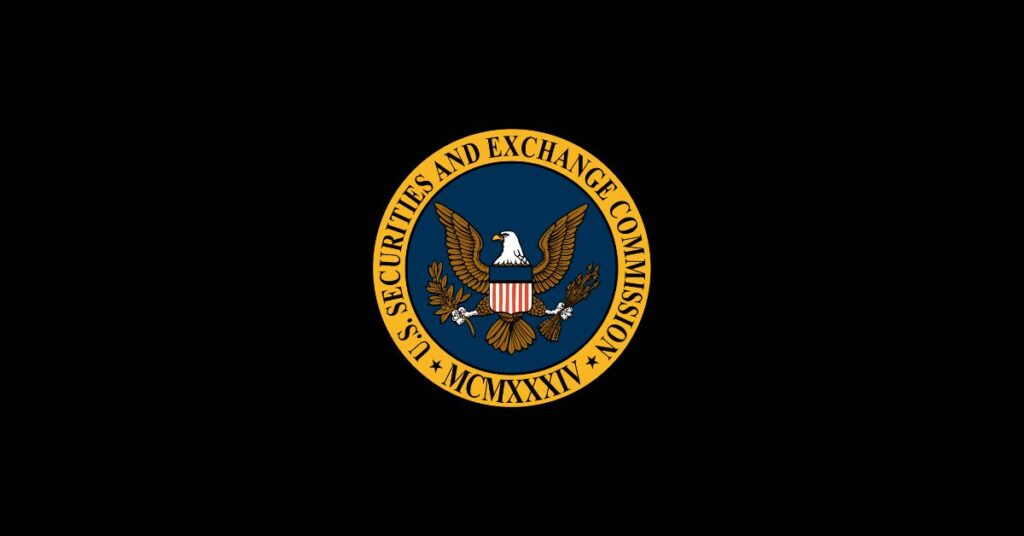Announced on September 17, 2025, this SEC approval for Grayscale Digital Large Cap Fund marks a significant step toward mainstreaming cryptocurrency investments, potentially opening doors for more institutional involvement in digital assets like Bitcoin (BTC), Ethereum (ETH), Ripple (XRP), Solana (SOL), and Cardano (ADA).

Investors are buzzing: Could this be the catalyst that propels crypto from niche speculation to a staple in diversified portfolios?
SEC Approval for Grayscale Digital Large Cap Fund
The Grayscale Digital Large Cap Fund, first launched as a private investment vehicle in February 2018, has been trading over-the-counter since November 2019. Now, with SEC approval, it’s set to list on NYSE Arca under generic listing standards, streamlining what was once a cumbersome approval process.
Previously, each ETF required individual filings under Rule 19b-4, which could take up to 240 days. The new framework allows exchanges like NYSE, Nasdaq, or CBOE to self-certify compliant products, slashing timelines and fostering innovation.
At its core, the fund aims to track the CoinDesk 5 Index (CD5), a benchmark of the largest digital assets by market capitalization. This provides investors with exposure to a basket of cryptocurrencies without the headaches of direct ownership, think no wallets, no private keys, just traditional brokerage accounts. However, the fund carries a 2.50% annual expense ratio and doesn’t pay dividends, which might deter cost-conscious traders.
The SEC’s decision builds on prior victories, like Grayscale’s 2023 court win that forced the agency to reconsider Bitcoin ETFs. Under Chair Paul Atkins, this approval emphasizes investor protection through transparency and anti-manipulation measures, while encouraging U.S. markets to lead in digital asset integration.
Key Components of the Grayscale Digital Large Cap Fund
To give you a clearer picture, here’s a breakdown of the fund’s current holdings as of September 17, 2025. These allocations are rebalanced periodically to reflect market dynamics:

- Bitcoin (BTC): Dominating at 72.23%, BTC remains the heavyweight, offering stability amid crypto’s ups and downs.
- Ethereum (ETH): Holding 17.12%, ETH brings smart contract functionality and DeFi exposure to the mix.
- XRP (XRP): At 5.62%, this asset focuses on cross-border payments, appealing to those eyeing fintech disruptions.
- Solana (SOL): With 4.03%, SOL emphasizes high-speed transactions and scalability for dApps.
- Cardano (ADA): Rounding out at 1.00%, ADA prioritizes sustainability and research-driven development.
This diversified approach helps mitigate risks associated with single-asset investments, though past performance shows shares have traded at premiums or discounts to net asset value (NAV), sometimes with wide swings.
Exploring the New Bitcoin ETF Options
Beyond the fund itself, the SEC approval extends to p.m.-settled options on the Cboe Bitcoin U.S. ETF Index (CBTX) and Mini-Cboe Bitcoin U.S. ETF Index (MBTX).
These cash-settled derivatives are a first for spot Bitcoin ETFs, allowing traders to hedge, speculate, or leverage Bitcoin’s price movements without physical delivery.
| Feature | CBTX Options | MBTX Options |
| Contract Size | ~$200,000 (at index level 2,000) | ~$20,000 (1/10 of CBTX) |
| Exercise Style | European (no early exercise) | European |
| Settlement | P.M.-settled (closing prices) | P.M.-settled |
| Expirations | Third Friday, quarterly, EOM, nonstandard | Same as CBTX |
| Multiplier | $100 | $10 (1/10 of CBTX) |
These options, cleared by the Options Clearing Corporation (OCC), reduce counterparty risks and provide flexibility for smaller positions via the mini version. Analysts, such as James Seyffart from Bloomberg Intelligence, predict that this could attract fresh capital, thereby boosting liquidity in BTC and altcoins.
What This Means for the Future of Crypto Investments
The broader implications of this SEC approval for the Grayscale Digital Large Cap Fund are profound. It could pave the way for spot ETFs on other altcoins, enhancing institutional confidence and driving adoption.
Experts from the Solana Policy Institute suggest this decision positions the U.S. as a global leader in regulated crypto products, potentially drawing billions in new investments. For retail investors, it means easier access to diversified crypto exposure through familiar channels.
In summary, the SEC’s approval is more than a regulatory formality; it’s a vote of confidence in the maturity of crypto. As the landscape evolves, staying informed is key.
Ready to dive deeper into crypto trends? Follow our MevX blog for exclusive insights, analysis, and updates on the latest in digital finance.
Don’t miss out! Follow today!
Share on Social Media:
